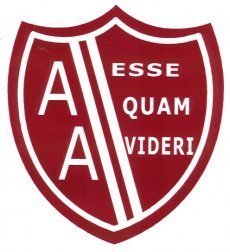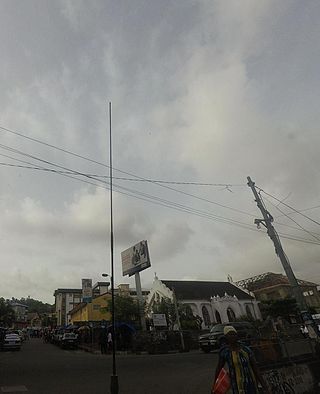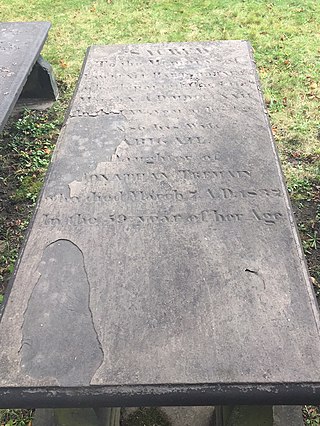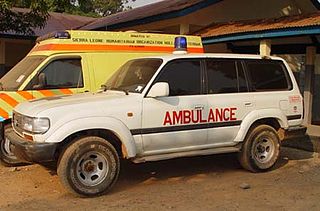
Sierra Leone is a country in West Africa with a North Atlantic Ocean coastline to the west. It lies on the African Plate. The country's main geographical features include wooded hill country, an upland plateau, and mountains in the east. The highest peak is Mount Bintumani, which is 1,948 meters (6,391 ft) above sea level. The coastline has a belt of mangrove swamps. Freetown, the nation's capital city, has one of the world's largest natural harbours. The Rokel River is the largest river in Sierra Leone. It is 400 kilometres (250 mi) long and has a basin with a total area of 10,622 square kilometres (4,101 sq mi).

Freetown is the capital and largest city of Sierra Leone. It is a major port city on the Atlantic Ocean and is located in the Western Area of the country. Freetown is Sierra Leone's major urban, economic, financial, cultural, educational and political centre, as it is the seat of the Government of Sierra Leone. The population of Freetown was 1,055,964 at the 2015 census.

The Archdiocese of Freetown is a Latin Church ecclesiastical territory or diocese of the Catholic Church in Sierra Leone. Its episcopal see is the city of Freetown, the capital and most populous city of the African country. It is a metropolitan see with three suffragan dioceses in its ecclesiastical province.

The Siaka Stevens National Stadium, commonly known informally as the National Stadium, is the national stadium of Sierra Leone, located in the capital city of Freetown. It is used mostly for football matches and it also has athletics facilities. It is the largest and main stadium in Sierra Leone and has a capacity of 45,000. The stadium serves as the exclusive home of the Sierra Leone national football team, known as the Leone Stars.

The Albert Academy (AA) is a secondary school in Freetown, Sierra Leone.
Murray Town is a suburb in Sierra Leone's capital of Freetown. The Amputees and War Wounded Association is based here arising from the local camp for such people. The Sierra Leone Grammar School is also located here. Murray Town contains many colonial style board houses dating back to the turn of the 20th century.
Kissy is a neighbourhood located on the eastern end of the capital, Freetown, in Sierra Leone. It is known for its various health services, including the United Methodist Church Health and Maternity ward, as well as Kissy Mental Hospital. Additionally, Kissy is home to over 500 Liberian refugees. In Kissy Village, you can find the Kissy Road Church of the Holy Trinity, which should not be confused with the Church of the Holy Trinity on Kissy Road. The latter was burned down by RUF rebel forces in 1999, but a restoration plan was implemented, successfully restoring the building. Moreover, the church on Kissy Road operated a school.

St. John's Maroon Church is a Methodist church located in Maroon Town, a district of Freetown, the capital of Sierra Leone. It is one of the oldest churches in the country.
Waterloo is a city in the Western Area of Sierra Leone and the capital of the Western Area Rural District, which is one of the sixteen districts of Sierra Leone. Waterloo is located about twenty miles east of Freetown. Waterloo is the second largest city in the Western Area region of Sierra Leone, after Freetown. The city had a population of 34,079 in the 2004 census, and 55,000 as per a 2015 estimate. Waterloo is part of the Freetown metropolitan area.
Settler Town is the oldest part of the city of Freetown, now the capital of Sierra Leone, and was the first home of the Nova Scotian Settlers.
Rawdon Street Methodist Church is a Methodist historical church in what was the historical Settler Town, Sierra Leone which is now known as Freetown, Sierra Leone. Rawdon Methodist was established by African American settlers in Sierra Leone who are known in Freetown as the 'Nova Scotian Settlers'. The first minister at the church was Joseph Brown; George Carrol (Carral) and Isom Gordon assisted him with running the church. Rawdon was supported built and supported by the Nova Scotians.

St. George's Cathedral is an historical Church Mission Society Anglican church in Freetown, Sierra Leone. The church was one of the grandest churches in Freetown, and had one of the highest attendance ratings for a church. It is now the Cathedral Church of the Anglican Diocese of Freetown. As an iconic edifice strongly associated with the Creole people of Sierra Leone, St George's Cathedral was described as "that bastion of Creoledom."

The Nova Scotian Settlers, or Sierra Leone Settlers, were African Americans who founded the settlement of Freetown, Sierra Leone and the Colony of Sierra Leone, on March 11, 1792. The majority of these black American immigrants were among 3,000 African Americans, mostly former slaves, who had sought freedom and refuge with the British during the American Revolutionary War, leaving rebel masters. They became known as the Black Loyalists. The Nova Scotian settlers were jointly led by African American Thomas Peters, a former soldier, and English abolitionist John Clarkson. For most of the 19th century, the Settlers resided in Settler Town and remained a distinct ethnic group within the Freetown territory, tending to marry among themselves and with Europeans in the colony.

Sierra Leone is officially a secular state, although Islam and Christianity are the two main and dominant religions in the country. The constitution of Sierra Leone provides for freedom of religion and the Sierra Leone Government generally protects it. The Sierra Leone Government is constitutionally forbidden from establishing a state religion, though Muslim and Christian prayers are usually held in the country at the beginning of major political occasions, including presidential inauguration.
The following is a timeline of the history of the city of Freetown, Sierra Leone.

Healthcare in Sierra Leone is generally charged for and is provided by a mixture of government, private and non-governmental organizations (NGOs). There are over 100 NGOs operating in the health care sector in Sierra Leone. The Ministry of Health and Sanitation is responsible for organizing health care and after the end of the civil war the ministry changed to a decentralized structure of health provision to try to increase its coverage.

The Sierra Leone Creole people are an ethnic group of Sierra Leone. The Sierra Leone Creole people are descendants of freed African-American, Afro-Caribbean, and Liberated African slaves who settled in the Western Area of Sierra Leone between 1787 and about 1885. The colony was established by the British, supported by abolitionists, under the Sierra Leone Company as a place for freedmen. The settlers called their new settlement Freetown. Today, the Sierra Leone Creoles are 1.2 percent of the population of Sierra Leone.

The Sacred Heart Cathedral also simply called Cathedral of Freetown, is a religious building that is affiliated with the Catholic Church and is located in the Howe street of the town of Freetown, capital and most populous city of the African country of Sierra Leone.
Jui is a town in the Rural District in the Western Area of Sierra Leone Jui is located just outside the east end of Sierra Leone's capital Freetown city limit. Jui is home to a very religiously and ethnically diverse population.
Zion Methodist Church, Wilberforce Street is a historic Settler church established by the Nova Scotian Settlers in 1792 and the present building was constructed in the early to middle of the nineteenth century.











